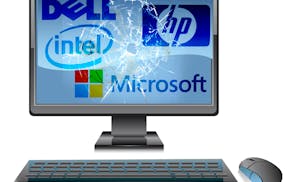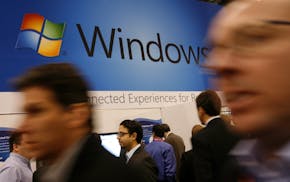Q: When I switched my Internet service from Comcast to CenturyLink, I wanted to notify Facebook that I had changed my e-mail address. But I discovered that Facebook wouldn't let me log in using my Facebook name, and wanted me to start all over again with a new account (which meant I would lose the connections to my more than 250 Facebook friends.) What can I do?
David Erickson, Brooklyn Center
A: I think you were locked out of Facebook because your Comcast e-mail address no longer exists.
On Facebook, your user name is linked to the Comcast e-mail address on your account. If Facebook can't confirm that it's your e-mail address, you can't get into your account.
Contact Facebook one of three ways:
Go to "Login basics" at tinyurl.com/lgn7e7c. Click on "I can't reset my password because I can't access the e-mail address listed on my account." Follow the directions.
Go to "I can't change my e-mail address" at tinyurl.com/mn4vhr8 and fill out the form.
Go to"Report a login issue" at tinyurl.com/mbv2g5d and fill out the form.
You can avoid this problem in the future by listing a second e-mail address on your Facebook account (see tinyurl.com/n5fy3qr). If you leave CenturyLink and lose your e-mail address there, you can still log in to Facebook with your alternate e-mail address.
Q: I can't use the "back button" on Internet Explorer 10 on my Windows 7 PC. When I right-click on the back button to get a list of previously visited pages, I find instead a series of pages with names such as "ad.doubleclick.net" and "a1.interclick.com." What are these and how do I get rid of them?
Jon Bell, Bloomington
A: What you're seeing is Web tracking activity from DoubleClick, owned by Google, and InterClick, owned by Yahoo. They monitor people's movements from one website to another for advertisers by putting bits of code called cookies into Web browsers.
Normally, evidence of this tracking wouldn't show up in your browser's history when you hit the "back button." When that happens, it indicates that a Windows file called "hosts" has been tampered with by something you've picked up online, such as malicious software or "adware" programs that show advertising. You can eliminate the problem by returning the hosts file to its original settings. Because you're using Windows 7, that's easy. Go to tinyurl.com/mlp2mz and click Microsoft's "Fix It" button.
If you'd like to go a step further and prevent Web tracking (to the extent that's possible), turn on Internet Explorer 10's tracking protection (see tinyurl.com/lgzk4rq). It tells websites that you don't want to be tracked. Some websites will abide by your request, others won't.
E-mail tech questions to steve.j.alexander@
gmail.com or write to Tech Q&A, 425 Portland Av. S., Minneapolis, MN 55488. Include name, city and phone number.

Alexander: A beeping computer is telling you what's gone wrong inside

Alexander: How to stop deleted iPhone e-mails from coming back

Alexander: Refurbished PCs may need a BIOS update to use new components

Alexander: Windows 11 not always to blame for browser or e-mail problems


